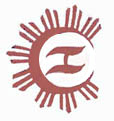|
|
|
 |
WHY COMPAREOUR NATIONAL HEROES?By Ed Aurelio C. ReyesKamalaysayan Writers and Speakers(May 1996) |
|
![]() (This page has a CYBER TALK-BACK instant feedback box at the bottom.)
(This page has a CYBER TALK-BACK instant feedback box at the bottom.)
![]()
![]() S
A RESEARCHER on Andres Bonifacio, this writer is often confronted with
statements or earnest questions that would compare Bonifacio to Jose Rizal,
especially when it pertains to the matter of which should be the national hero.
S
A RESEARCHER on Andres Bonifacio, this writer is often confronted with
statements or earnest questions that would compare Bonifacio to Jose Rizal,
especially when it pertains to the matter of which should be the national hero.
The simplest available answer to this specific point is to inform the people bringing it up that in fact the Philippine state officially recognizes not one but two national heroes, covered by official proclamations.
The one proclaiming Rizal as national hero was promulgated by Emilio Aguinaldo and later on supported vigorously by the American occupation force (ironically, the American people do not honor only a single national hero). Bonifacio was proclaimed national hero by the Philippine Assembly in the late 1920s in a resolution that caused the building of Guillermo Tolentino's Bonifacio Monument at Grace Park, Caloocan City.
Moreover, only these two have national legal holidays to their own respective and respectable names: Rizal's on December 30, marking his execution, and Bonifacio's on November 30, marking his birthday.
But such an answer begs the question or the intent of the question. those who ask me really want to hear from me an echo of their own respective sentiments. The Rizalists want me to concede that Bonifacio was runner-up to Rizal; the Bonifacio fans want me to support their protest against the overprotection of Rizal as the national hero of the Philippines. (Come to think of it, who among our students, nay teachers, know that officially we have not one but two?)
Which brings me to my main point in this column item. I would rather not compare heroes at all. (Neither would I want to compare a hero and a usurper, but that's another story.)
Rizal and Bonifacio shone and led in different periods of our history. Each one of them responded to a specific set of socio-political circumstances that differed from that addressed by the other. And the response of one in his own time and circumstance cannot be fairly compared to the response of the other to the latter's own challenging circumstance.
Rizal took on from the period of Gom-Bur-Za when there was nascent collective consciousness of our distinction from and basic equality to the colonizers. There was need to amplify this further, and this could best be projected in political debate and other forms of competition with the colonizers in their own games and in their own country. Rizal led in this Propaganda Movement along with Marcelo H. del Pilar and Graciano Lopez Jaena, and, in their own distinct way, Juan Luna and Felix Hidalgo.
They were also able to learn and show from their own experience the futility of any further expatriate struggle for reform. Rizal persisted in the struggle for reform, but brought it home. He founded the La Liga Filipina, and his experience of being arrested and exiled to Dapitan showed that even this was no longer workable. (Rizal came out with a statement in December 1896 condemning the Revolution, but I understand it to have been made under duress -- he was a prisoner in anticipation an execution, and, contrary to popular belief, he was not perfect.)
Bonifacio learned a lot from the writings of Rizal and Plaridel, but integrated them appropriately and creatively with his own studies of indigenous pre-Spanish philosophies and of the beliefs of protonationalist protest Christianity in the great tradition of Herman Pule's Confradia. Contrary to popular belief that he was semi- illiterate, Bonifacio was a philosopher and a brilliant literary writer whose statesmanship was superior to most others.
He was in a good position to lead in the birthing of this nation and he did not balk at this time. He formed the Katipunan, led it in a moral and ethical education campaign and organizing work for four long years, before finally presiding over a state assembly in Pasig that decided to start the Revolution. He led in planning and undertaking the brilliant military scheme for a Katipunan victory in August 29-30, 1896, which could have succeeded if only the Katipunan contingents from Cavite had shown up to perform their assigned role of capturing Intramuros.
Bonifacio was responding well to challenges that had to be faced at his time in our history, quite different from the challenges that had to be faced by Rizal. So why compare them?
I have also been confronted statement and questions that would make me compare Bonifacio to Aguinaldo. As I said earlier, I would not allow myself to make that kind of comparison, earlier. I can explain why, but that would be another story.
(Kamalaysayan Media Service)![]()
|
|
|
..
|
![]()
![]()
![]() back to the website opening window
back to the columns opening window
back to the website opening window
back to the columns opening window![]()